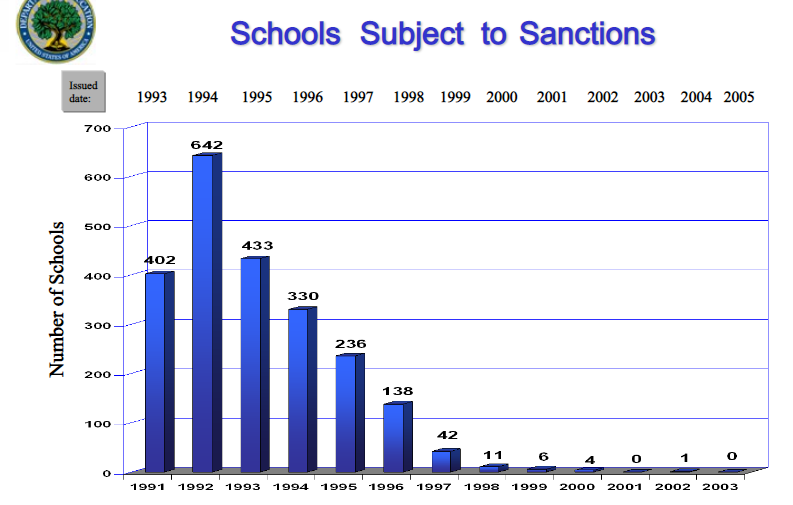
This is just a graphic that I snatched off the web that demonstrates the number of schools that were facing losing Title IV funding (federal grants and loans) due to high cohort default rates. Now, there is some math that goes into these numbers, a certain amount of the schools appeal, etc.. So, the important take away here, isn’t necessarily that any one school, or another, was impacted, but the sheer number at the outset of the program (1993).
In 1990, the Senate Permanent Subcommittee on Investigations conducted a series of hearings on fraud and abuse in the Federal Family Education Loan Program (FFELP). Evidence provided to the Subcommittee showed that operators of some for-profit trade schools
made substantial amounts of money by taking payments from students in the form of federally guaranteed student loans while providing little or no education in return. Faced with large debts and no marketable training, these students often defaulted on their loans. Based on this and other evidence, the Subcommittee concluded that high default rates were both a warning sign of potential abuse and a common thread of actual abuse in problem schools.
In response to this information and to loan defaults that increased from $1.4 billion in fiscal year 1988 to over $2.6 billion in fiscal
year 1990, the Congress enacted the Student Loan Default Prevention Initiative Act of 1990. This legislation, together with the
Department's Default Reduction Initiative, established a process for discontinuing participation in FFELP for postsecondary institutions with default rates over certain statutory thresholds.
credit: Student Loan Defaults: Department of Education Limitations in Sanctioning Problem Schools (Letter Report, 06/19/95, GAO/HEHS-95-99).
I’ll send you over here to read this fabulous piece by newamerica.org for more reading on cohort default rates. Short story is that they worked, until they didn’t, once schools started shuffling numbers, and yeah, lying, in order to stay off the list.
And oh yes, I forgot to mention that most of schools with problems, were for-profits. I’ll say it again; it’s about money, not students.